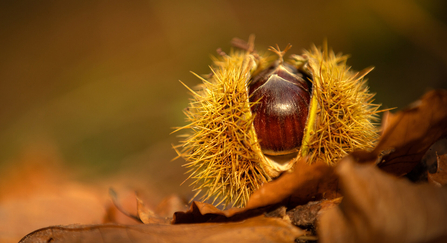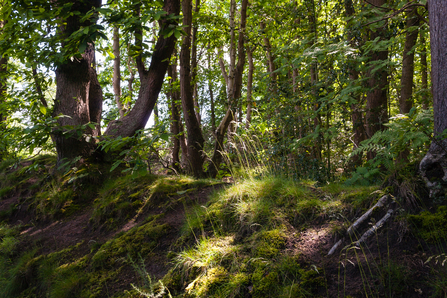
Sweet chestnut fruit by Jon Hawkins – Surrey Hills Photography
On the edge of Dropping Well Farm there is a small shelterbelt woodland. You might not think it’s much but it is an area full of history. This small woodland is filled with sweet chestnut Castanea sativa, a tree that was introduced to the UK almost 2,000 years ago by the Romans. Sweet chestnuts are now considered to be a naturalised species, so it is another thing to thank the Romans for. These trees can be identified by several features. For example, they have simple, elongated oval leaves with a serrated edge and as the tree grows the bark appears to twist around the trunk of the tree. They also produce chestnuts; shiny reddish-brown fruits found within spiky green casing (not to be confused with the conkers from horse chestnuts ).
The sweet chestnuts here are more recent; records suggest that they were planted just after the Second World War. This could have been part of the country’s afforestation program after the war, in which around 22,000 hectares of new woodland were planted over a 30-year period. Historic maps show that the woodland used to be heathland, which could explain the signs of rare flora here that are more associated with open heathland than woodland. On some of the trees, there are indications of historic coppicing. This involves cutting a tree almost to the ground, encouraging new growth from the base. Whilst historically sweet chestnut has been used for fencing poles, it can also be used in carpentry, joinery and furniture making.



